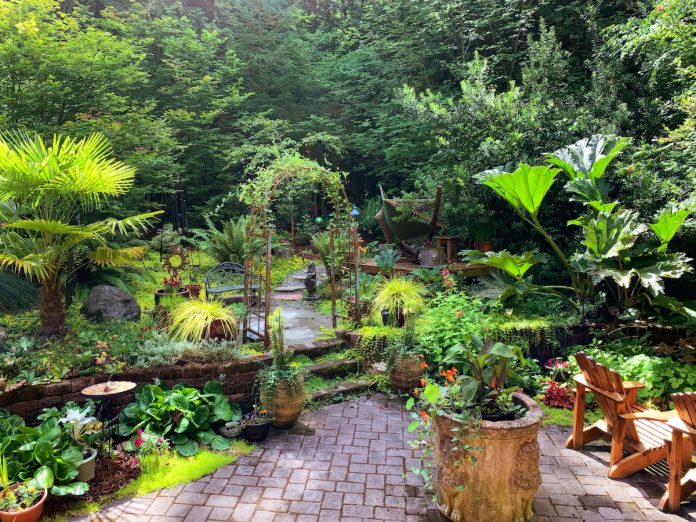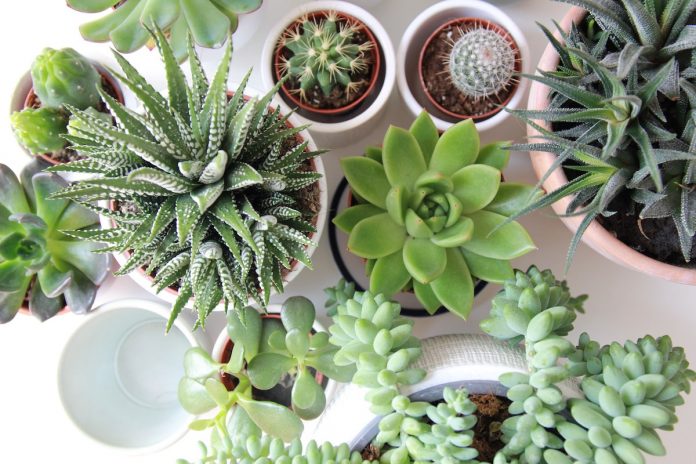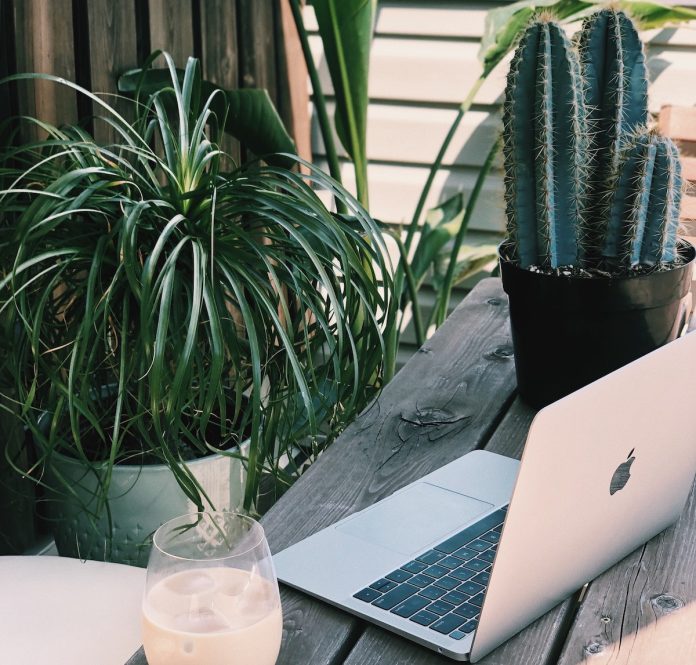How Big Do Spider Plants Get?
Spider plants (Chlorophytum comosum) are instantly recognisable. Even if you don’t know your pilea from your peperomia, you’re likely familiar with exactly what a spider plant looks like. And there’s a good reason for this.
Spider plants – also known as the ribbon plant, airplane plant, or spider ivy – have been extremely popular houseplants for decades. Their slender, variegated leaves give them an attractive appearance that looks great on shelves or draping from hanging baskets.
However, much of the spider plant’s popularity is due to how easy it is to look after. Even children and new plant parents can look after a spider plant without killing it within a few months.
One of the most appealing things about spider plants is their size. Because it is so easy to grow spider plant babies, it’s possible to have plants of all ages and sizes either growing in groups alongside each other or dotted around the home adding colour to shelves, window sills, tables, and hangers. If you want a small piece of greenery, a spider plant is perfect. If you want a larger statement plant, the spider plant doesn’t take long to grow.
What Size Does Spider Plant Chlorophytum comosum Grow To?
Grown as an indoor plant, spider plant chlorophytum comosum can reach an ultimate height and spread of 40-60cm. However, the long, narrow leaves can extend downwards for several feet. Because spider plants’ leaves are so long, they can only grow upwards so far before arching to grow towards the ground. For this reason, the height of the plant isn’t always as much as the length of the foliage.

How Fast Do Spider Plants Grow?
Spider plants are renowned for being fast growers. In fact, young plants can take on 30-40cm throughout a single growing season. This means that spider plants mature quickly.
You’ll know your plant is mature and ready to produce plantlets for propagation when you notice pretty but short-lived small white flowers appear on long stems. Spider plants usually reach their maximum height within 2-3 years.
Propagating Spider Plants
You may have heard that spider plants can have babies. Also known as pups, spiderettes, or offshoots, these spider plant babies grow on the end of long stolons. Mature plants can produce masses of pups over their lifetime.
If you’d like a full, lush appearance on a mature spider plant, simply leave the pups in place. They’ll take all the nutrients they need from the parent plant and will go on to have spider plant babies of their own. These can look amazing spilling down from a hanging basket, and many people prefer to leave them in place because they give the parent plant a more dense, unique look.
However, if you’d rather use these offshoots to create new plants to add to your collection, it is relatively simple to do:
Take a clean, sharp cutting tool and remove the pup from the stem, attaching it to the mother plant. Cut as close to the spiderette as you can. Take the small plantlets and place them in a glass or jar of water, taking care not to submerge the foliage.
Place the glass in bright, indirect sunlight and check on it every few days, changing the water when it becomes cloudy. After a couple of weeks, you’ll start to notice the baby plants growing their own roots. Once these are a few inches long, it’s time to transplant each new plant into a small pot. The process from cutting to potting usually takes just a few weeks.
Spider Plant Care
Like any plant, the better care a spider plant receives, the bigger it will grow. With adequate water and light, you’ll notice significant new growth in next to no time.
Spider Plant Watering
Most spider plants are forgiving of the occasional forgotten watering. As a general rule, check your spider plant’s soil weekly. If the top two inches of soil feel dry, give the plant a drink. If the soil is still moist, leave it a day or two before checking again. Aim to keep the potting mix moist but well drained.
Tap water is fine for watering spider plants, but leave it to sit out overnight before use. Doing this lets the water reach room temperature and allows time for chemicals, such as fluoride, to evaporate. Water from the top and let excess water drain freely from the bottom of the pot. Empty the saucer underneath so the plant doesn’t sit in water, which can lead to root rot.

Light
Other than watering, light is the next most important factor in looking after spider plants. Native to South Africa, these plants like bright light. However, avoid direct sunlight, which can scorch the leaves. A bright spot in indirect light is perfect.
Spider plants are pretty robust and can cope with moderate light, although you’ll notice slower growth and fewer offshoots. Plants with dark green leaves are more capable of thriving in light shade than striped green and white varieties.
Temperature and Humidity
Spider plants are tropical plants that flourish in warm temperatures in a humid environment. Spider plants grow slowly in colder climates, but normal room temperature is ideal. Keep your plants away from radiators and other heat sources and out of cold draughts.
Grown indoors, they are ideal kitchen or bathroom plants, but regular misting is enough to keep them looking their best in drier rooms.
Feeding
Spider plants don’t need to be fertilised often but they do benefit from a dose of general houseplant liquid fertiliser during the growing season. You may wish to dilute the plant food to half-strength – read the instructions carefully to ensure you’re applying the right amount.
Pruning
Regular pruning isn’t required for spider plants. All that’s needed is for any yellow leaves to be removed. You may also want to remove any spent flowers and cut away offshoots to propagate.
Brown leaf tips can be pruned if you like, but as long as the brown tips are only at the ends of the foliage, it isn’t a problem, and you can leave them be.
Spring is the best time of year for pruning spider plants. Pruning in spring affords the plant plenty of time to recover and grow back any cut leaves. Always use clean, sharp pruners and be sure to remove leaves from the base of the plant.

Re-Potting
While spider plants prefer to be slightly root-bound, they are fast-growing plants. This means they still need to be re-potted every couple of years. You’ll know it’s time to move your spider plant into a bigger pot when lots of thick roots start growing out of the drainage holes. You might also notice the root system pushing the plant up and out of its pot.
Bear in mind that your spider plant will stop growing if the pot provided is too small. If you’d like to grow a larger plant and encourage baby spider plants to form, it’s best to upsize your plant’s pot with fresh potting mix regularly.
Common Problems With Spider Plants
While spider plants are generally easy to care for, there are some issues that are worth noting. Catching common problems early is the key to keeping your spider plant healthy and directing all of the plant’s energy into producing new growth.
Pests and Diseases
Spider plants are generally resistant to pests and diseases, and you won’t find them much of an issue. However, it’s worth keeping an eye open for scale insects. These annoying little pests like to lurk in the nooks and crannies between spider plant leaves. The best way to remove them is to lift them off with your fingernail or wash them away with a solution of soapy water.
Yellowing Leaves
Leaves turning yellow or brown are usually a sign of overwatering. Depending on how long you’ve been giving the plant too much to drink, you may be able to save it by simply letting the soil dry out completely before watering again. Long-term overwatering can be more tricky to deal with, and you may need to repot the plant in fresh soil to help dry out the roots.

Brown Tips
Brown leaf tips on spider plants can be caused by several things.
Direct sunlight is the easiest culprit to fix. If you notice the tips of the foliage turning crispy and brown, check the light your plant receives. If it may be too bright, move the plant to a spot in indirect light.
Another issue that may cause brown plant tips is indoor air being too dry. Move potted plants away from radiators or fireplaces and mist regularly to help boost humidity levels.
Finally, as with many potted plant problems, incorrect watering can be the cause. Consider your watering schedule and check the soil to see if you need to adjust how much and how often you water your spider plant.
Brown, crispy tips are dead parts of the plant and won’t recover their lush green hues. For this reason, it’s best to prune them away, either by cutting the end of the leaf or removing the leaf altogether from the base of the plant.
Brown Spots
Brown spots on spider plant foliage indicates there might be an issue with the water. It might be that there are too many chemicals and switching to distilled water will solve the problem.
Alternatively, the sun could be scorching the leaves. Move the plant out of direct sunlight and into a spot where it can be brightly lit without suffering the sun’s harsh rays.
Spider plants can grow to an impressive size. The best way to promote healthy growth is to place the plant in bright, indirect light and keep the compost moist. From lush mature plants covered in long stems, star-shaped flowers, and little offshoots, to smaller new plants just starting their growing journey, there is a spider plant out there that is exactly the right size for your space. A spider plant is easy to grow indoors and makes the perfect houseplant for beginners and experienced plant parents alike.





